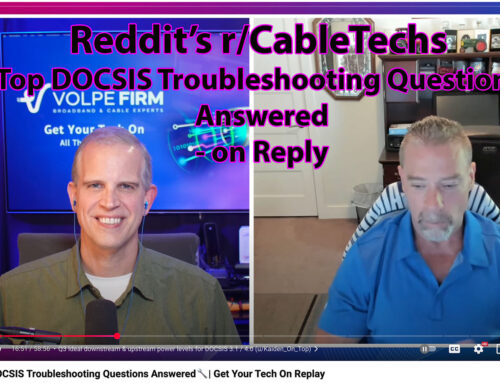Low latency DOCSIS and gaming — a billion dollar industry we cannot ignore
In the last issue of Broadband Library, I wrote an in-depth article on low latency DOCSIS (LLD). The big focus for LLD was on gaming and the rise of Esports (https://en.wikipedia.org/wiki/Esports). If you recall, Esports is a billion dollar industry with 454 million viewers in 2019 and growing very quickly. Low latency DOCSIS is required in our industry to keep millions of subscribers who want to continue to use our broadband services for the purpose of Esports (also known as gaming), which is a money making opportunity for some subscribers and for others just a way to have fun, be social with friends over the Internet and/or host parties live while watching and playing Esports. The world is always evolving.
Let’s be clear here, the gaming I’m writing about does not fall under the category of Candy Crush, Angry Birds or Words with Friends. Those games don’t require LLD. They are simple and not impacted by latency nor do they need high end graphic cards. If you have been happily gaming on your phone or tablet over a DOCSIS network and thinking to yourself that latency is not an issue because Candy Crush works just great, you should talk to some friends on the other side of the gaming aisle. Call of Duty or Fortnite gamers suffer greatly with jitter and latency over the DOCSIS network.
Performance gaming — more common than not
Performance gaming falls into the realm of first-person shooters (FPS), fast movement games like Call of Duty, Counter Strike, Fortnite and many more. All of these require high end graphics cards and PCs. Another point is that gamers — of which there are millions — and millions more every year (a growth industry) are not heavy into consoles as my generation was. Consoles still have their place but are being replaced by stand-alone PCs and a broadband connection, which is great news for cable operators. Gamers also see gaming as a way of connecting and playing with people all over the world via broadband connections, not just those who have the right console. This is where latency comes into play, and gamers will choose their ISP based on latency as well as jitter. Today, most DOCSIS networks without LLD will exceed acceptable latency for FPS gaming, especially during peak traffic hours as well as when another user in the house starts streaming large amounts of traffic, such as a Netflix stream. The end result will drive gamers to look for a better service, which is usually fiber.
As a cable operator, if you are the only provider in town, you’re safe for now — maybe. If you have an incumbent fiber provider, you are at tremendous risk of losing subscribers over latency. Remember, from my previous article the average age in the U.S. for gamers is 31 years old. This age is skewed higher in Canada to 39 years old. These are not 11-year-old kids. So, if you are in this age group and not gaming it doesn’t mean a large portion of the population isn’t gaming, it just means you aren’t. Often times gamers are the decision makers, homeowners and breadwinners. We cannot ignore this group of the population and younger gaming generations maturing on their heels, who may care more about Esports such as Fortnite or Call of Duty and demand the broadband services needed to support them properly.
Beyond DOCSIS and fiber
As if competition from telecom fiber providers is not already enough, telecom providers have their eye on the low latency gaming opportunity as witnessed in many headlines reading that 5G will revolutionize gaming, claiming latency of 1-2 ms vs today’s DOCSIS latency of up to 150 ms.
The takeaway should be that as a cable operator you may not have a fiber provider competing for your subscribers today, but that can change overnight by upgrading the cellular network in a city from 4G to 5G overnight. Game over man.
What can we do?
As an industry we need a full-court press on LLD. DOCSIS CCAP/CMTS vendors have available solutions. At this year’s Cable-Tec Expo vendors had one type or another of LLD demos. Some were significantly more advanced than others, but fundamentally the basics are there as is the recognition that a need is there. What is missing? An understanding of the opportunity and/or the threat that latency represents to the industry as a whole. We have an opportunity now to get ahead of the competition. We can do 1-2 ms in our DOCSIS network with LLD and should be deploying it.
Low Latency XHaul — another option
Keep reading at Broadband Library
5G Low Latency DOCSIS





Leave a Reply